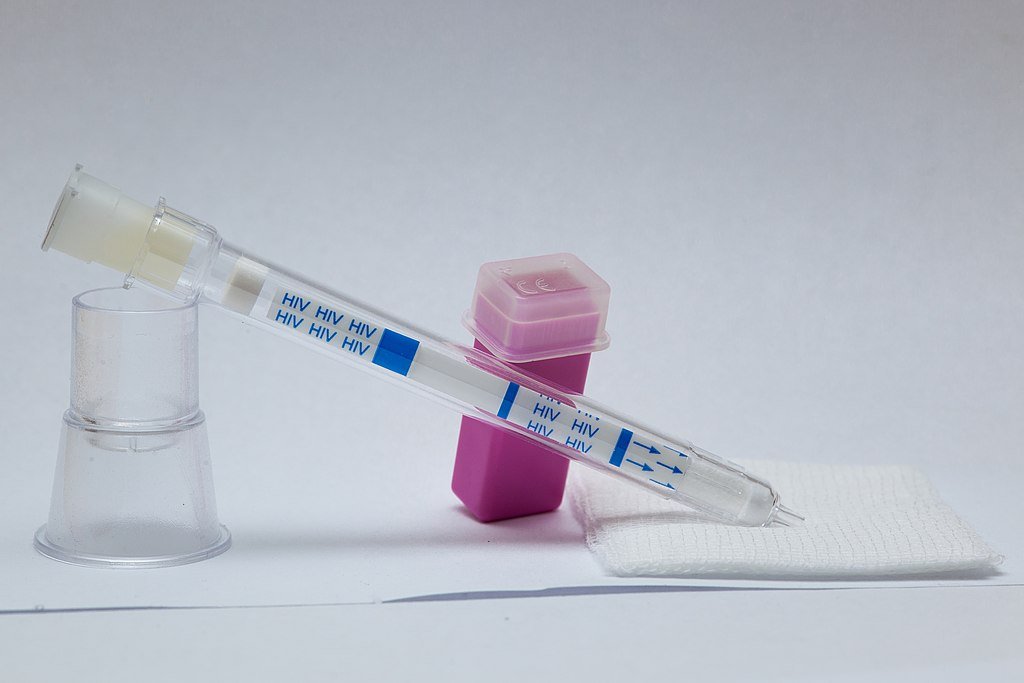The importance of the HIV (human immunodeficiency virus) test lies in detecting HIV infection, before it degenerates into AIDS (acquired immunodeficiency syndrome), the most advanced stage of the infection. Knowing your HIV status can help keep you and others safe. The Centers for Disease Control and Prevention (CDC) provides some specific recommendations: all individuals between the ages of 13 and 64 should get tested for HIV at least once; all pregnant women to get tested for HIV so they can start taking HIV medications if they are HIV positive; and that those at higher risk of HIV be tested more often.

What types of HIV tests are there?
The following 3 types of tests are available for diagnosing HIV infection: antibody tests, antigen / antibody tests, and nucleic acid tests (NAT).
Antibody tests check for HIV antibodies in blood or oral fluid. HIV antibodies are disease-fighting proteins that the body produces in response to HIV infection. Most rapid tests and home use tests are antibody tests.
Antigen/antibody tests can detect both HIV antibodies and HIV antigens (a part of the virus) in blood.
NATs look for HIV in the blood.
Normally, the first HIV tests a person will undergo will be antibody tests or an antigen / antibody test. NATs, beyond the higher cost, are used for HIV screening in case of high risk exposure or possible exposure with early symptoms of HIV infection.
What else to know about HIV testing
Confidential vs Anonymous HIV testing: test results can be confidential (results will be nominative and included in your personal medical record) or anonymous (instead of a name, you receive a number. HIV-positive test results will be reported to Health departments, for statistical reports, and then shared with CDC).
Where can I get the HIV test: HIV test can be found at your healthcare provider, but it is also available in many hospitals, medical clinics, substance use programs, and community health centers. Even in pharmacies and online, the home test kit can be purchased.
What to do after testing?
Case of HIV negative: the test shows that you do not have HIV, so you will need to maintain the normal preventive measures, to avoid transmission of HIV. In sexual intercourse, always use a condom and generally adopt less risky behaviors. For individuals at increased risk of contracting the virus, take preventative medications (pre-exposure prophylaxis or PrEP). Do not use injectable drugs.
If the test detects HIV positive, you should first talk to your doctor about antiretroviral therapy (ART), based on a mix of medicines to treat HIV infection, which should be started as soon as possible. ART does not cure HIV, but it does help you live longer, healthier lives by reducing viral load to an undetectable level. Low viral load levels mean there is no risk of passing HIV to your HIV-negative partner through sex.
You may also like
Hearing loss: things to know before buying a hearing aid
Choosing a hearing aid isn’t easy, especially if you’ve never used one. They come in different shapes, colors and levels of technology.The first factor in determining which hearing aid to choose is your hearing loss, which could range from very mild to severe. Next, you need to know what you would like it to be… Continua a leggere Hearing loss: things to know before buying a hearing aid
Small Lymphocytic Lymphoma (SLL): Symptoms and Treatments, Causes and Diagnosis
Small lymphocytic lymphoma (SLL) is a cancer of the immune system. It affects infection-fighting white blood cells called B cells. SLL is a type of non-Hodgkin’s lymphoma, which along with chronic lymphocytic leukemia (CLL) indicates the same type of disease, treated the same way. Whereas in SLL, the cancer cells reside primarily in the lymph… Continua a leggere Small Lymphocytic Lymphoma (SLL): Symptoms and Treatments, Causes and Diagnosis
Diabetes Type 2: Epidemiology and Prevention
Diabetes Epidemiology Diabetes is a very common disease. New updated data from the new International Diabetes Federation (IDF) Diabetes Atlas show that more than 34 million Americans have diabetes (1 in 10 individuals), of whom approximately 90-95% have type 2 diabetes. In UK the situation is slightly better: with nearly 4 million sufferers, about one… Continua a leggere Diabetes Type 2: Epidemiology and Prevention
Small Lymphocytic Lymphoma (SLL): Stats, Causes and Diagnosis
Small lymphocytic lymphoma (SLL) is a cancer of the immune system that affects the white blood cells that fight infection, called B cells. SLL is a type of non-Hodgkin’s lymphoma, as is chronic lymphocytic leukemia (CLL). Both cancers are basically the same disease, and are treated in almost the same way. The difference between the… Continua a leggere Small Lymphocytic Lymphoma (SLL): Stats, Causes and Diagnosis
